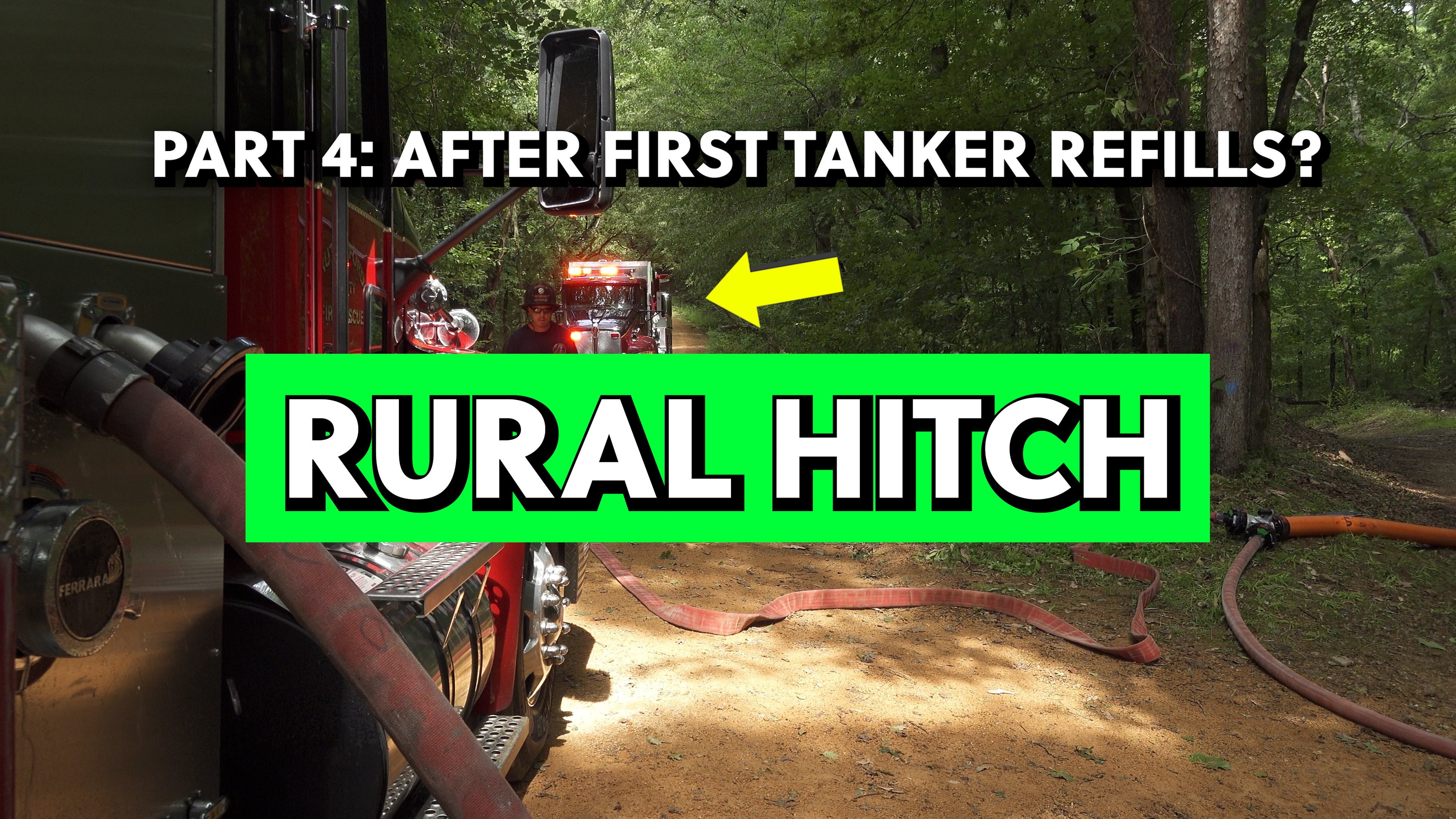Summary: After the first tanker refills and leaves, building a full-scale dump site becomes critical to sustain and scale your water supply. This next phase in the rural hitch operation includes deploying folding frame tanks, suction hose, low-level strainers, and any needed adapters to transition from a quick-hit setup to a high-flow dump site. With the initial Siamese setup delivering 500–600 GPM, a fully built dump site allows you to expand your operation without slowing down fire attack.
Tanker 1 Leaves. Now What?
Once the first tanker is empty and heads back to refill, your operation is far from over. To maintain flow — or increase it — you need to shift into the next phase of the Rural Hitch: dump site expansion.
Why Scaling the Dump Site Matters
The initial rural hitch setup using a Clappered Siamese and 3" hose can deliver 500 to 600 gallons per minute. That’s solid output for early suppression efforts. But that number depends on tankers arriving in sequence and offloading without delay.
As the fireground demand grows — especially during large, multi-structure incidents or extended operations — that initial system won’t be enough. You’ll need a dump site that can handle more water, more efficiently.
What Equipment You’ll Need to Expand
To start scaling, the crew on scene should begin offloading key equipment:
-
Folding frame tank
-
Sections of hard suction hose
-
Low-level strainers
-
Any necessary adapters or appliances
These components let you move from a quick-flow Siamese setup to a full dump site that can handle greater volume and support drafting operations.
Flow Rate Depends on Consistent Supply
With the initial rural hitch configuration still flowing through the Siamese, your system can maintain its 500–600 GPM rate — as long as tankers keep showing up. That flow is uninterrupted and dependable, assuming there’s no traffic jam at the drop point and the crew maintains sharp transitions.
But if tanker arrival slows down or demand ramps up, having a draft-ready dump site allows a dedicated pumper to draw from stored water and boost pressure to the attack engine.
Add Personnel and a Dump Site Engine When Scaling
As you start to build out the site, expect to need more hands — and another engine. That second engine becomes the anchor for the dump site, taking suction from the folding tank and pushing water through LDH to the clappered Siamese or directly to the attack engine.
This setup separates your water supply from your transport rhythm, meaning the fireground stays fed even if tankers momentarily lag.
Don’t Wait to Expand
One common mistake is waiting too long to start setting up the dump site. Once Tanker 1 is gone, the clock’s ticking. The crew on scene should:
-
Begin unloading dump site components immediately
-
Coordinate engine placement at the draft site
-
Keep all lines and tanks clear for additional arriving tankers
Rural Hitch isn’t just about flowing water quickly — it’s about keeping it flowing. The transition from mobile supply to a built-out dump site is what makes that happen.




Comments